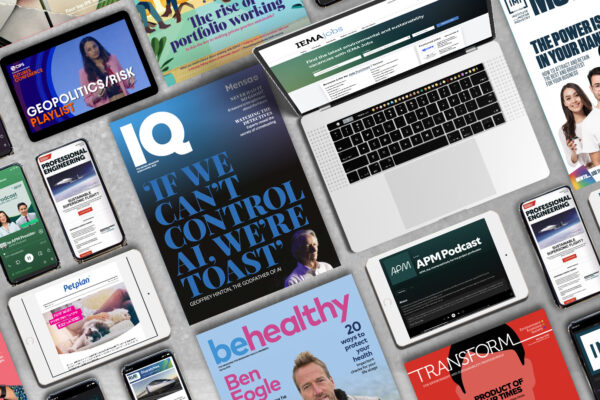At the height of the pandemic in 2020, we invited 12 membership bodies to a virtual workshop to discuss the innovative ways they were maintaining high editorial standards while keeping costs low.
These different voices in the room included professional and consumer membership organisations, visitor attractions and charities. While participants talk to distinct audiences, they each recognised that the main driver for member engagement is content.
Three years on, how has the outlook shifted for those looking to make the most of their budgets but without compromising on quality? The 2022/23 Re:member research pointed to concerns around squeezed finances across both the consumer and professional sectors, so many of the challenges of the pandemic remain with us still.
With that in mind, here are seven quick wins that every membership organisation should consider.
Purely practical
It is always sensible to regularly review the specification, format and frequency of communications – in both digital and print channels – as these can reveal significant savings.
During lockdown international post was erratic, so many bodies shared magazines and other once-printed products digitally.
This proved an interesting watershed – particularly across the professional sector with a number of organisations deciding that it was time to discontinue their print offering. In 2022, print usage dipped below 70% for the first time – having been as high as 93% in 2018.
We know that digital editions suffer from low engagement, but for overseas members timeliness may be more important than receiving a physical item in the short term.
For those remaining invested in print, there are also significant cost savings to be gained by reducing paper weights, changing formats and tweaking sizes. Relatively minor format changes have the potential to reduce postage costs dramatically.
The five Rs
Another quick win came from Jackie Scully, Executive Director at Think. She pointed to the ‘Five Rs’ as a cost-effective way of getting new life from pre-existing content.
- Revisit your bank of content. You’ve already invested time and money into articles, videos and podcasts – take a look back and see how much mileage it still has.
- Refresh your previous articles with new context, new intros and new points for your high-performing listicles. Google will thank you.
- Repurpose the content where you think there’s more to be said. That podcast you recorded a few months ago that people can’t stop talking about? Get back in touch with the interviewee and record part two. You could always change mediums – turn podcasts into magazine articles, or grow social media Q&As into webinars.
- Repackage the content you had to shelve in the wake of the crisis and see how you can turn it into something else – an ultimate guide, a blog series, a landing page for member recruitment purposes. What have you got in your arsenal and how can you stitch it together?
- Respond to what’s going on. If your metrics are showing your audience is searching for a specific topic, cover it. Or you could try reaching out to them in short polls and flash surveys to see what insights you garner – but don’t pontificate! It doesn’t need to be an overwrought official piece of communication; it’s a way of speaking quickly and directly to your audience.
The importance of intelligent repurposing and refresh of content has rarely been clearer. Since 2020, the growth of video has given rise to a new method of achieving greater value from individual output. The ability to turn a single webinar or seminar into a whole content campaign is an area that many bodies are considering as a cornerstone of their strategy.
Target practise
The old maxim that there’s no better way to engage members than by having a conversation with them remains as true now as it did three years ago.
During the pandemic, Ruth McPherson at the Incorporated Society of Musicians, reported running flash polls on social media to get a sense of quick member sentiment.
“Our audience are all musical professionals,” said Ruth. “We ran a membership survey because we wanted to find out their specific needs during and post-Covid-19, and particularly around external affairs. We do a lot of lobbying and campaigning, so the polls have been useful in getting quick answers we can use when approaching the government and relaying up-to-date advice.”
Ruth’s intuition has proven reflective of a significant trend. Across professional bodies in 2022, 26% now report flash poll usage (up from 14% in 2020) – clearly an area of growth for organisations looking for quick feedback on urgent topics.
Make the most of your experts
Chances are, you’ve already paid for all the tools you need to communicate with members and produce great content for them – and your audience will have plenty of ideas they want to talk to you about.
“We’re still operating our helpline, and we’re using the questions that people are raising – which are largely Covid-specific at the moment – to inform content for a series of home-made podcasts,” said Jo Sumnall from the Royal Osteoporosis Society, “It is a fantastic way of creating audience-led content that is shareable and informative.”
Whilst ‘at-home’ production compromises are now (thankfully) in the past, the pandemic has left a legacy of digital infrastructure on which experts can be called upon. Whereas once getting an expert on camera or record to share knowledge was a logistical challenge, there is virtually no one without quick access to Zoom or Microsoft Teams.
Can you add free value?
John Cottrell, Head of Membership at the Campaign for Real Ale (CAMRA), noted that during the lockdown they’d moved their in-person events to online, hosting beer-tasting socials on a conference call.
“Within a week of lockdown, we’d released Red (On)lion, the virtual pub, where we host 50-strong beer-tasting sessions,” he says. “We’ve also launched an app, Brew2You, which supports the industry by getting some of the 60 million pints sitting in breweries and pubs to customers. We’re trying to be as innovative as we can, and finding as much stuff that our members can get involved with as possible.”
Beryl Hales from Townswomen’s Guilds, a women’s membership organisation, said that they had been hosting online quizzes and tea parties – and even using them as member recruitment drives by asking people to bring their friends along.
“I’ve never hosted anything like this in my life,” Beryl laughed, “but it’s worked really well.” One important consideration for Beryl was that many of their members weren’t on email, so while cutting costs was an important consideration for the team, they don’t want anyone to miss out.
In reality, some of the mid-pandemic optimism around socialising over Zoom ebbed away as the novelty wore off – by last year investment in digital alternatives to conferences and awards amongst our sample size had been slashed.
However, the concept of digital-only communication remains enticing in some areas – students in particular are seeing improved digital options open to them as they try and balance work and study.
Remember your members
For Claire Bowie from Historic Environment Scotland (HES), lockdown revealed the different attitudes towards HES membership: “It’s really highlighted that there are two distinct types of members according to motivations. We have those for whom membership is all about the transactional benefits, where we’re seeing a higher propensity to cancel.”
“On the other side are the community-minded, who have gotten in touch to ensure that we keep collecting their direct debit as a way of supporting our work. It has really reminded us how important it is to remember the different motivations for people becoming members.”
Different member segments have always been important for planning and measurement purposes, but perhaps the last three years have convinced bodies to better explore the exact proposition their services are delivering for each. The latest advice coming out of the Re:member research is clear: make sure your value proposition is locked in and well signposted as we move towards a recession.
Communicate!
Mid-pandemic there was a very really fear that in reducing editorial output, members who are more transaction-focused would decide to end or not renew their membership.
Whilst this remains a consideration, it has become a little easier to offer value in other areas to help bridge the perception of quality gap.
Then, as now, communication with members about evolving services is key.
Don’t try to hide from your members the fact that you’re reducing expenditure – you’re a community, so talk to them like equals. If nothing else, the last three years of pandemic impacted work and life patterns has shown the benefits of a mixed strategy for member dialogue, so don’t be afraid to speak about those changes.





